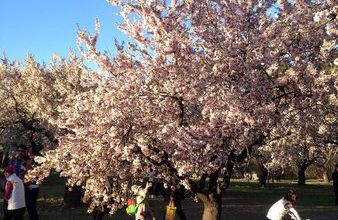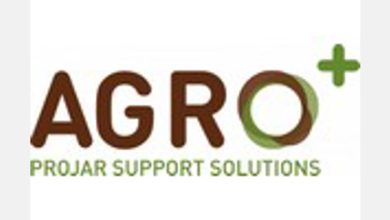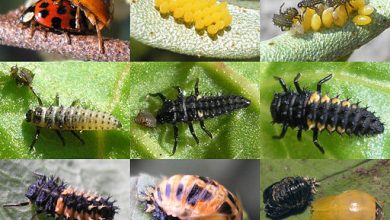Weevil: [Characteristics, Detection, Effects and Treatment]
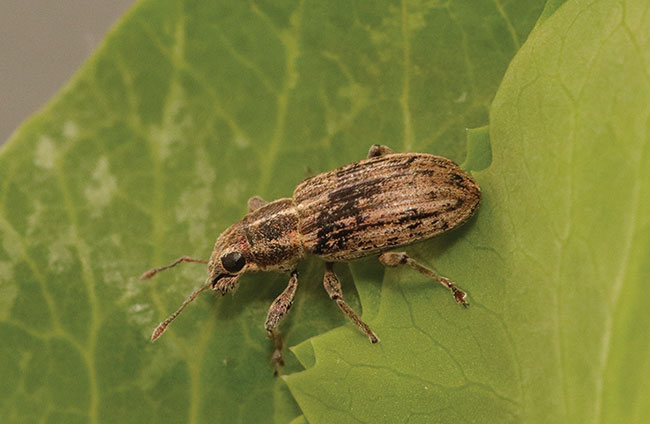
What is the weevil?
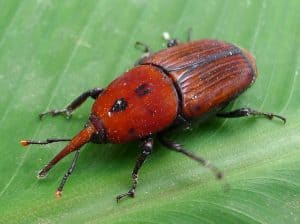 The Rhynchophorus ferrugineus, popularly known as the red weevil, is a coleopteran-type insect belonging to the weevils and weevils, that is, to the gigantic superfamily of the Curculionoidea, which boasts about 86,000 families and more than 5,000 genera.
The Rhynchophorus ferrugineus, popularly known as the red weevil, is a coleopteran-type insect belonging to the weevils and weevils, that is, to the gigantic superfamily of the Curculionoidea, which boasts about 86,000 families and more than 5,000 genera.
They are all herbivores, because they feed on vegetables and therefore are very dangerous for the well-being of agriculture in all its forms.
How can we identify it?
These weevils have as fundamental characteristics:
- The red weevil comes from tropical Asia and is one of the largest, because it reaches between 2 to 5 cm and has a very striking ferrous red color.
- Development of a chewing mouth apparatus that is shaped like a proboscis, which can be wide and long and also narrow, depending on the species.
- It has a hard shell that protects the abdomen of the insect, brown in color.
- They have antennae with clubbed ends that are covered and protected by grooves that form along the proboscis.
Normally, the infection in affected palm trees is usually detected approximately one year after infection.That is when the danger signs become more evident and when we must apply the treatment against the red palm weevil to be able to save them in time.
Some of the symptoms that affected palm trees present areː
- Leaves asleep or decayed.
- They build galleries at the insertion point of the leaves and the larvae also open galleries of a meter in length in the trunks of the invaded plants.
- Cocoons of the insect are visible.
- In the case of palm trees, the eye is completely weakened.
- Some healthy leaves are seen hanging down, appearing to have been half cut.
Among the populous family of the Curculionoidea, there are other types of Weevils. Let’s see what it is.
Anthonomus grandis or boll weevil
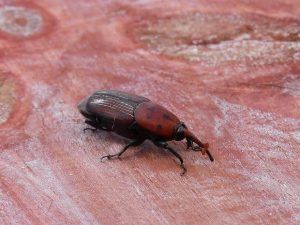 It is about 6 mm long and is a specialist in eating flowers and fruits of the cotton plant. From Central America he managed to travel to the United States and Mexico, at the end of the 19th century.
It is about 6 mm long and is a specialist in eating flowers and fruits of the cotton plant. From Central America he managed to travel to the United States and Mexico, at the end of the 19th century.
It reproduces rapidly, is highly mobile, and has been a real pest for cotton crops in the southern United States. (Missouri strip).
Insecticides do not produce a lethal effect on adult weevils.The female deposits around 200 eggs throughout her life, wrapped in a cotton cocoon, known as squares, they are like small protective capsules.
Like other species, it is capable of sealing the oviposition hole with the help of its excrement, which is why the area is stained brown. This generates an infestation of the capsules, which end up falling off the plant, or being suspended.
Another interesting fact is that the larvae that come out of the eggs learn to feed on the capsule tissue, in a period that goes from 7 to 14 days. After that, they pupate for about 5 more days, to give way to the young adult, who also feed on the squares or capsules and pollen.
In short, the boll weevil has the following life cycle: egg, larva, pupa and adult, which can be completed in 2 to 3 weeks under ideal conditions.In large infestations, more than 50% of the crop will surely be lost and in subsequent infestations the plants will not produce fruit.
But when winter arrives, many insects perish because they cannot withstand such low temperatures, despite the fact that they can hibernate and keep reserves until the arrival of the hot season.Adult weevils consume cotton terminals from seedlings without causing serious injury that retards their growth.
What plants does the weevil affect?
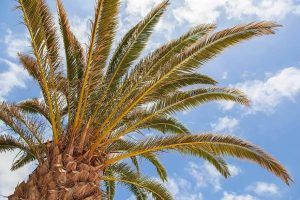 It lives at the expense of plants from the palm families. Coconut palms or Cocos nucifera, the so-called Oil Palm or Elaeis guineensis and others of the Phoenix genus, such as the Canary Island Palm and the Date Palm.
It lives at the expense of plants from the palm families. Coconut palms or Cocos nucifera, the so-called Oil Palm or Elaeis guineensis and others of the Phoenix genus, such as the Canary Island Palm and the Date Palm.
Similarly, attacks have been detected against plants of other species such as the heart of palm Chamaerops humilis.And in the case of cotton plantations, the attacks are perpetrated by the cotton boll weevil.
How to fight the weevil?
There are several biological and chemical control methods used to combat this pest.
Cotton Plant Weevil
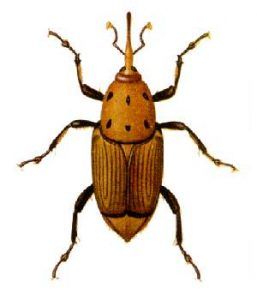 A very beneficial practice is the early management of crops, in order to preserve the routes and prevent the increase of invaders, because in this way the time of planting vulnerability is reduced.
A very beneficial practice is the early management of crops, in order to preserve the routes and prevent the increase of invaders, because in this way the time of planting vulnerability is reduced.
If the soil temperature allows for early sowing, the negative impact of the insect will be significantly reduced, since maturing varieties, plant fertility management and control over plant size will also be early. preventing them from being too exuberant.
Likewise, the application of growth regulators such as mepiquat chloride or Pix is recommended.All these actions contribute to the reduction of the weevil population.
Red weevil
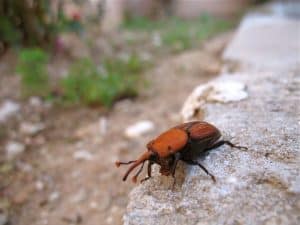 In Spain, palm plantations affected by the destructive action of the red palm weevil have given good results with biological control methods.
In Spain, palm plantations affected by the destructive action of the red palm weevil have given good results with biological control methods.
In the Andalusian, Catalan and Valencian communities, various methods of extermination of the plague have been sought, achieving greater effectiveness with the introduction of parasites that feed on these weevils.
Another effective method consists of the application of a plant-type endotherapy and shower-type foliar applications, used in palm trees that do not have the apical bud cut or bitten by the larva.The use of the fungus Beauveria bassiana89 as a biological control agent has also given excellent results.
What are the best products to eliminate weevils?
In the case of square weevils that damage cotton crops, they are combated with combined actions of cultural control and chemical products.
In general, the so-called pheromone traps are very effective, which are prepared with a synthetic or artificial version of the pheromones produced by males to attract weevils of both sexes, being able to obtain information on the type of activity and the number of adults. present in the crop.
chemical treatment
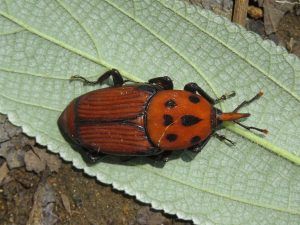 A first chemical treatment called pinhead square is done with insecticide for these weevils, which should coincide with the appearance of the first squares or capsules, just beginning to develop (they should be the size of a matchstick head). phosphorous).
A first chemical treatment called pinhead square is done with insecticide for these weevils, which should coincide with the appearance of the first squares or capsules, just beginning to develop (they should be the size of a matchstick head). phosphorous).
This early extermination procedure prevents the appearance of an army of colonizers of weevils or square weevils, which also reduces the need to continue applying insecticide for the rest of the harvest season.
These should be combined with the pheromone traps, as long as the plants are growing at a rate of one trap per 10 to 20 acres. The second method of insecticide application is directed against populations that have exceeded the economic threshold, since they will show losses if they are not controlled.
In this treatment, about 100 squares should be randomly selected when they have already reached the size of a pencil eraser. And the insecticide application treatments every week must be repeated, until the reduction in the production of squares or capsules is seen.
Usually this is done at 4-5 day intervals, until the population is reduced.Finally, the third insecticide treatment is an aerosol called «diapause control», it is aimed at the weevils that enter the hibernation period, which must be applied after the harvest is harvested, but also before the weevils enter the wintering habitat.
It is necessary to carry out several sprayings, with breaks of between 10 to 14 days. And it is suspended when the weevils perish as a result of strong frosts, or when the remains of the crop are destroyed.

![Photo of Plant Bromeliads: [Care, Plantation, Place and Substrate]](https://www.complete-gardening.com/wp-content/uploads/2022/08/plant-bromeliads-care-plantation-place-and-substrate-390x220.jpg)
